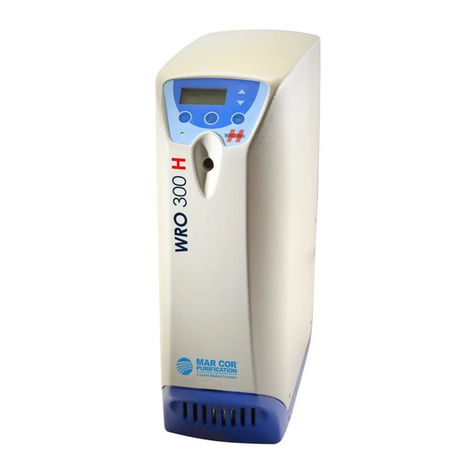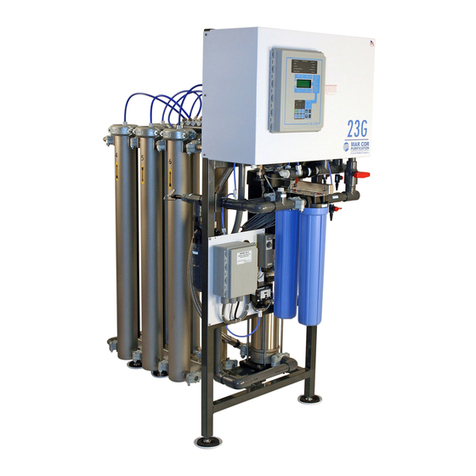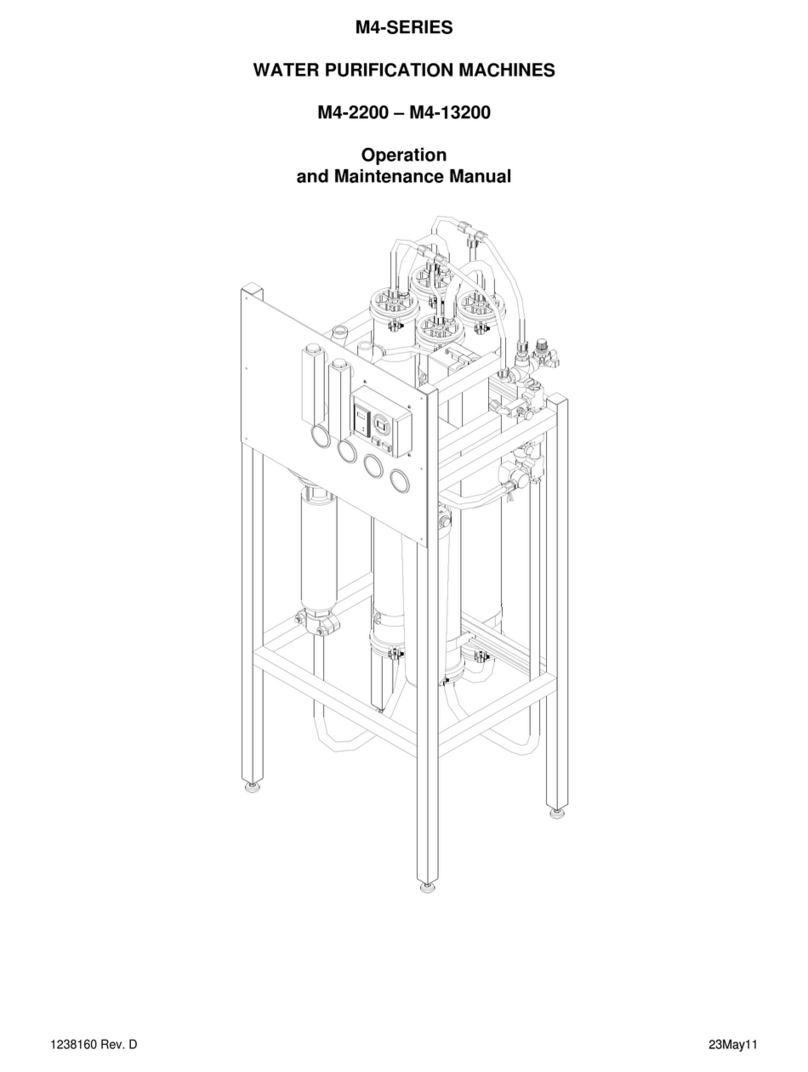
P/N 3027437 Rev. B
Table of Contents
4
WRO 300/300 H
CPU Board . . . . . . . . . . . . . . . . . . . . . . . . . . . . . . . 28
AC Relay Board (only WRO 300 H) . . . . . . . . . . . . 28
External Communication Connections . . . . . . . . . . 28
Heaters (only WRO 300 H) . . . . . . . . . . . . . . . . . . . 28
Mains Power Cable . . . . . . . . . . . . . . . . . . . . . . . . . 29
Description of Indications . . . . . . . . . . . . . . . . . . . . . . . 29
Light Indications. . . . . . . . . . . . . . . . . . . . . . . . . . . . 29
Buzzer Sounds . . . . . . . . . . . . . . . . . . . . . . . . . . . . 31
Operation Functions . . . . . . . . . . . . . . . . . . . . . . . . . . . 31
Standby Mode . . . . . . . . . . . . . . . . . . . . . . . . . . . . . 31
Auto Flush . . . . . . . . . . . . . . . . . . . . . . . . . . . . . . . . 31
Run Mode . . . . . . . . . . . . . . . . . . . . . . . . . . . . . . . . 32
Changing from Run to Standby Mode. . . . . . . . . . . . . . 35
Start After Power Loss. . . . . . . . . . . . . . . . . . . . . . . 35
Hygiene Functions . . . . . . . . . . . . . . . . . . . . . . . . . . . . 37
Manual Flush. . . . . . . . . . . . . . . . . . . . . . . . . . . . . . 37
Chemical Disinfection and Cleaning . . . . . . . . . . . . 37
Dwell and Rinse. . . . . . . . . . . . . . . . . . . . . . . . . . . . 44
Preservation . . . . . . . . . . . . . . . . . . . . . . . . . . . . . . 46
Heat Disinfection (only WRO 300 H). . . . . . . . . . . . 48
Features — Extra Functions. . . . . . . . . . . . . . . . . . . . . 53
Water Save Function. . . . . . . . . . . . . . . . . . . . . . . . 53
Reminders. . . . . . . . . . . . . . . . . . . . . . . . . . . . . . . . 54
Time Channels . . . . . . . . . . . . . . . . . . . . . . . . . . . . 55
Replacements. . . . . . . . . . . . . . . . . . . . . . . . . . . . . . . . . . 57
Replacement Matrix . . . . . . . . . . . . . . . . . . . . . . . . . . . 57
Internal Service. . . . . . . . . . . . . . . . . . . . . . . . . . . . . . . . . 59
Changing Configuration Parameters. . . . . . . . . . . . . . . 59
Internal Service Mode. . . . . . . . . . . . . . . . . . . . . . . . . . 59
Enter Internal Service Mode . . . . . . . . . . . . . . . . . . 59
Internal Service Loop. . . . . . . . . . . . . . . . . . . . . . . . 60
PC Support Software . . . . . . . . . . . . . . . . . . . . . . . . . . 71
USB Serial Driver Installation . . . . . . . . . . . . . . . . . 71
GXL — Logging. . . . . . . . . . . . . . . . . . . . . . . . . . . . 74
GXP — Preset. . . . . . . . . . . . . . . . . . . . . . . . . . . . . 74
Checksum Status . . . . . . . . . . . . . . . . . . . . . . . . . . 75
GWD - Download. . . . . . . . . . . . . . . . . . . . . . . . . . . 75
Start the GWD. . . . . . . . . . . . . . . . . . . . . . . . . . . . . 75
Presets and Defaults. . . . . . . . . . . . . . . . . . . . . . . . . . . 79
Change Presets for WRO 300 H. . . . . . . . . . . . . . . 82
RO Pump. . . . . . . . . . . . . . . . . . . . . . . . . . . . . . . . . 83
Tank Control . . . . . . . . . . . . . . . . . . . . . . . . . . . . . . 83
Water Save . . . . . . . . . . . . . . . . . . . . . . . . . . . . . . . 84
Conductivity. . . . . . . . . . . . . . . . . . . . . . . . . . . . . . . 85
User Interface Panel (LCD). . . . . . . . . . . . . . . . . . . 87































